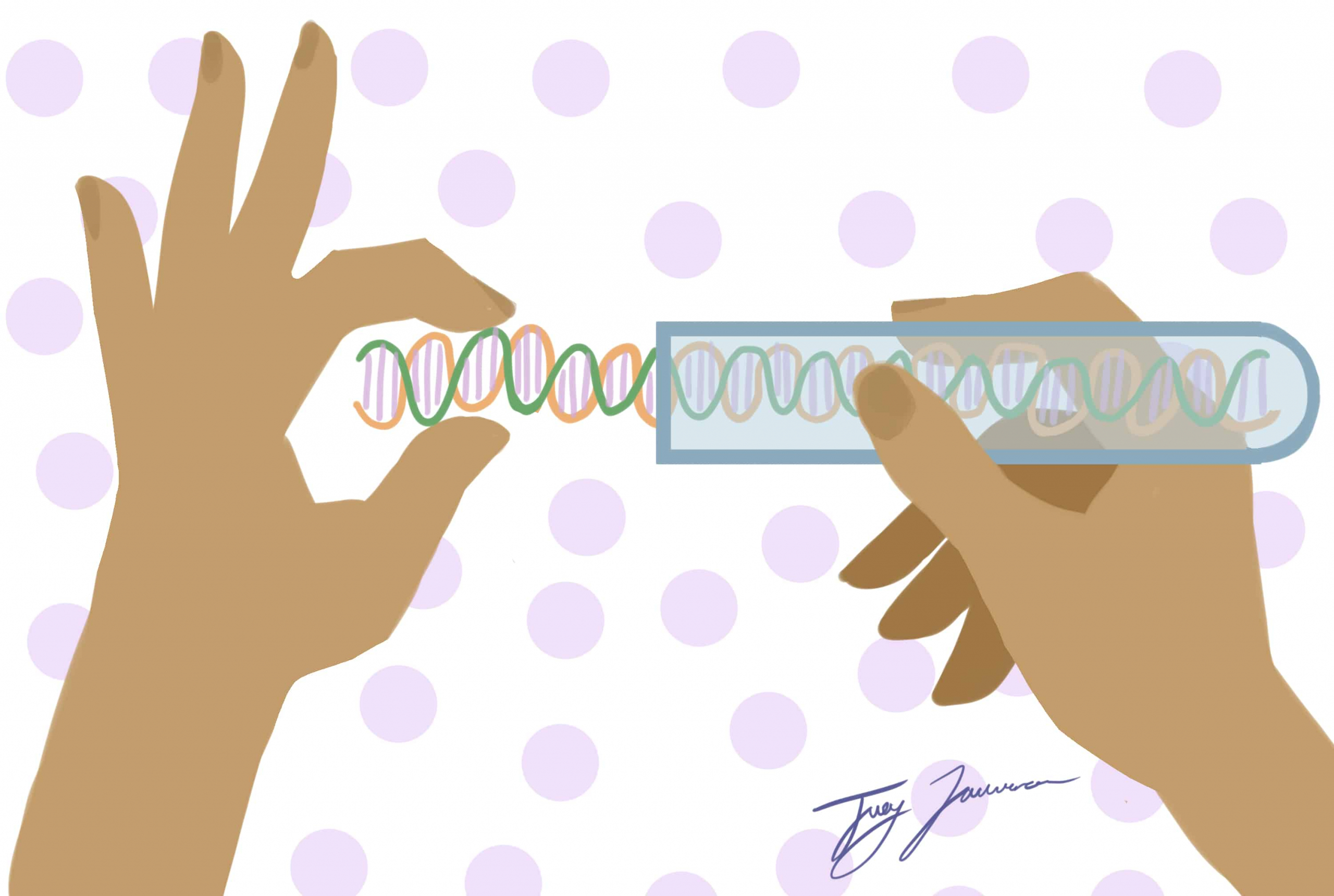An ever-growing list of companies including the likes of 23andMe and Ancestry.com are offering the general public the opportunity to get to know themselves by testing their DNA and offering feedback on results.
The commercial is familiar to fastidious viewers of American broadcast television: a young woman travels the world while a cover of the Broadway show tune “Getting to Know You” plays in the background.
Helpful pop-ups indicate the actress’ ethnic make-up as she crosses the landscapes; “29% East Asian” flashes under the neon lights of a metropolis, “3% Scandinavian” appears among the glaciers.
The ad ends with the tempting offer that you, too, could discover what makes you you just by sending 23andMe a saliva sample.
Such advertisements are indicative of a flourishing industry.
But the self-knowledge they are selling to consumers is no longer restricted solely to an individual’s past.
The latest trend in personalized genomics is in its predictive potential: forecasting an individual’s likelihood of developing conditions like cancer, diabetes, and other diseases someone may be genetically predisposed to.
How do genetic tests work?
According to Dr. Stephen Scherer, Professor of Medicine and Director of the University of Toronto McLaughlin Centre and The Centre for Applied Genomics at Sick Kids Hospital, the tests have a microarray — microscope slides that are printed with thousands of tiny spots in defined positions — with a mix of genetic markers, or DNA sequences with known physical locations on chromosomes.
Depending on the company, each test contains around one million genetic markers.
“They then assay a DNA sample that was derived from saliva sent in a DNA spit kit,” wrote Scherer in an email to The Varsity. “They do some laboratory modifications to the DNA and put it on the microarray and test for presence or absence of a given genetic marker and then use this information to predict the medical outcomes.”
“They utilize the information from published large-scale studies where they provide an estimated risk of disease development for certain genetic variants,” wrote Dr. Ryan Yuen, Assistant Professor of Molecular Genetics, in an email to The Varsity. “These companies will then report the estimated risk for those variants if they are also detected in the subject.”
Yuen also explained how similar methods are used to determine the ancestry of an individual: “They compare the genetic variants detected in the subject with many other sequenced individuals (both internally and externally). The more similar the genotypes are between individuals, the more likely they are related to each other.”
Scherer explained that conclusions for common diseases like heart disease, high blood pressure, or diabetes are made using statistical probabilities and that nothing is definitive.
“For some rare genetic mutations that are quite predictive of a medical outcome (like cystic fibrosis) the ability to predict risk is much higher,” wrote Scherer.
So, how reliable are these tests?
A cardinal rule of observational data is that correlation does not necessarily imply causation, and therefore the reliability of genetic tests is questionable.
“Although these tests can seem exciting, its important that consumers are informed and understand the limitations of these types of tests,” wrote Salma Shickh, a certified Genetic Counsellor who is pursuing a PhD in Genomics Health Services and Policy Research at U of T, in an email to The Varsity.
“Most of these tests only look at… specific regions of the DNA code and so the risk they provide may not be based on complete information,” explained Shickh. “These tests are often offered without proper education and counselling for patients- which is important because they’re giving consumers information about their health.”
Scherer echoed Shickh’s sentiments. Scherer said that it’s important that consumers realize the results are completed in laboratories, and that companies that sell genetic tests must generate a profit margin, doing so by analyzing many samples at a time.
Consequently, the results are typically, but not always, accurate. In other words, consumers should interpret the results with a grain of salt.
“We believe here that the tests are useful if the data is interpreted by genetic counsellors to help the doctors and families understand what it means, and equally important what it does not mean. Most companies do not use genetic counsellors, they just send the data to you,” wrote Scherer. “If you do this kind of testing seek genetic counselling assistance to help interpret the results.”
What’s the future of genetic tests?
Though genetic tests are not perfect, Scherer noted that their value should not be dismissed.
“[The tests today are] typically not much better than knowing your family history, but as the data grows to compare against, it should get better and better,” wrote Scherer.
“I liken the field today to the early days when GPS units came out. As more and more maps went online (and then Google maps) the predictability kept getting better and better.”


